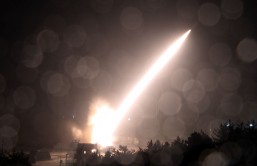Students from the University of Colorado showcased the design for a robot capable of gardening in a deep-space environment at the X-Hab Academic Innovation challenge.
X-Hab, a NASA project designed to encourage students to get involved in projects in science, engineering, technology, or math, staged a competition among students that emphasized their research and design skills. University students were instructed to develop a prototype and manufacture a functional robot, or project. The prototype developed by the students could be used in carrying out deep-space explorations, as well as establishing extraterrestrial habitats for human beings.
Students from the University of Colorado presented their project on June 23 before the employees of the Kennedy Space Station, including director, Bon Cabana. The students worked with the Distributed Remotely Operated Plant Production System (DROPPS) for this project. The concept consisted of an idea to cultivate edible plants that would help supply food for long-term space missions.
"We're hoping to take advantage of what these and other students are developing and use it in future space missions," said Tracy Gill, NASA's technology strategy manager at the Kennedy Space Center in Florida.
Heather Hava, a doctoral candidate for aerospace engineering sciences, guided the students in the development of DROPPS. He explained that the team wanted to create a robot that will assume the monotonous tasks that come with planting, saving lots of time for the astronauts.
In 2013, another student team from the University of Colorado demonstrated a robot that could tend a garden.
Hava said that this was one of their inspirations for DROPPS and focused on creating a flexible system that could work and take advantage of any kind of space habitat.
In their newer system, called the Remotely Operated Gardening Rover (ROGR), the robot was capable of traveling in any type of habitat with a group of SmartPots (SPOTS) which would be distributed throughout the deep space environment.
The SPOTS would function as the mechanism assigned to grow plants in hydroponic spaces, complete with computerized controls to help monitor the plants' growth.








